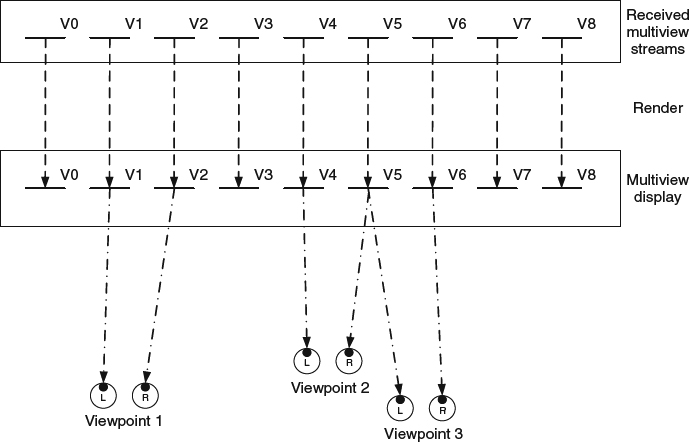5.5 Multiple View Coding
Multi-view video provides a new immersive visual experience where end users can watch a scene from different angles by moving the users' viewing position or other advanced interactive approaches. As illustrated in Figure 5.17, a multi-view autostereoscopic capable device can render several images from different views simultaneously. Therefore, each user can watch one stereo pair from any given viewpoint and multiple users can watch their desired views from different viewpoints at the same time.
To deliver the multi-view video to end users, the required bandwidth is significantly larger than that needed in stereo video. The straightforward methods, including using multiple single view or multiple stereo view compression technology, still encounter the bandwidth problem imposed by current content delivery infrastructure. To address the need of efficiently compressing multiple views, H.264 multiple view coding (MVC) [39–41] extends two-view stereo video coding discussed above into a more general scheme.

Figure 5.17 Multi-view video 3D display.
There are several fundamental requirements during the standardization procedure of MVC codec besides the coding efficiency. First, MVC should ensure backward compatibility; namely, passing H.264 MVC bit stream into an existing non-MVC H.264 decoder should not affect the whole syntax parsing process and should successfully ...
Get 3D Visual Communications now with the O’Reilly learning platform.
O’Reilly members experience books, live events, courses curated by job role, and more from O’Reilly and nearly 200 top publishers.

